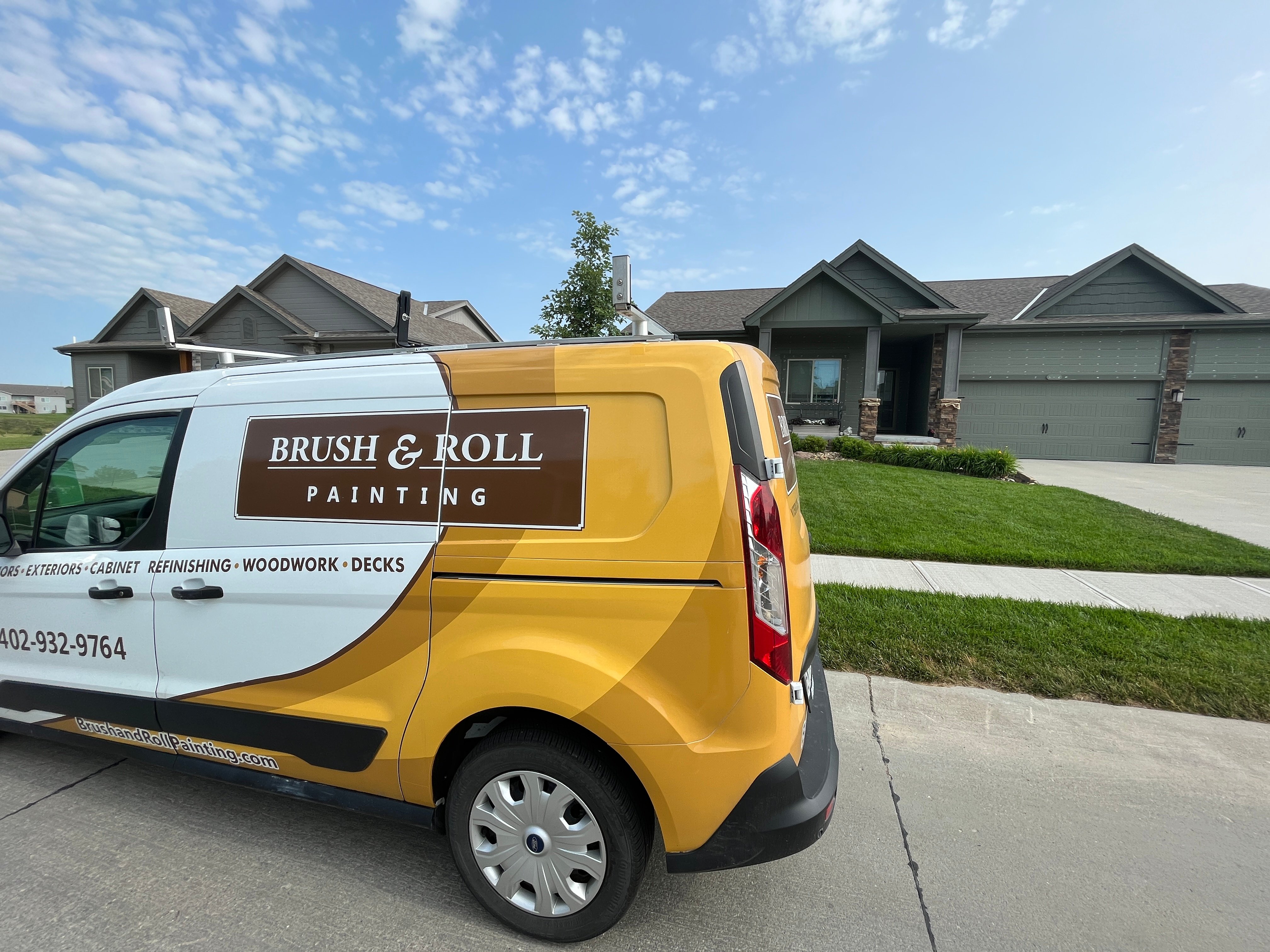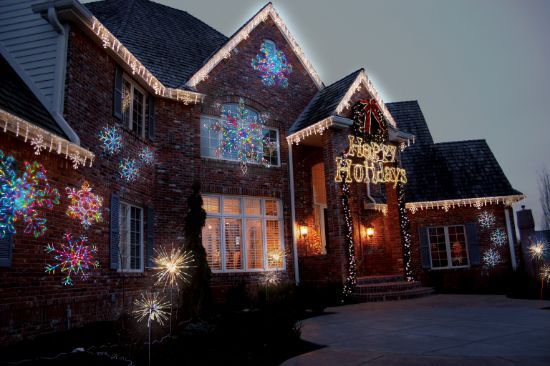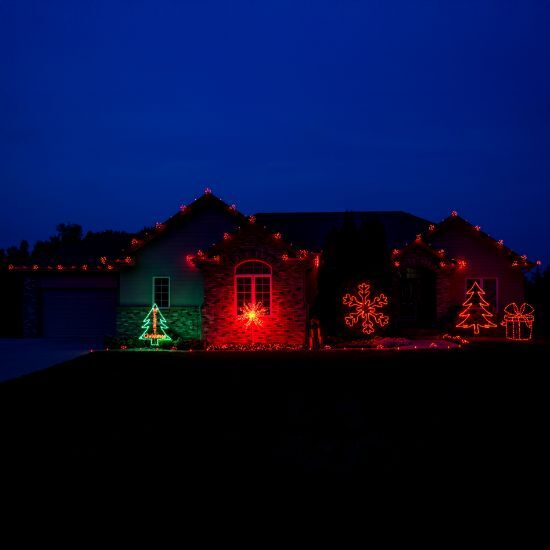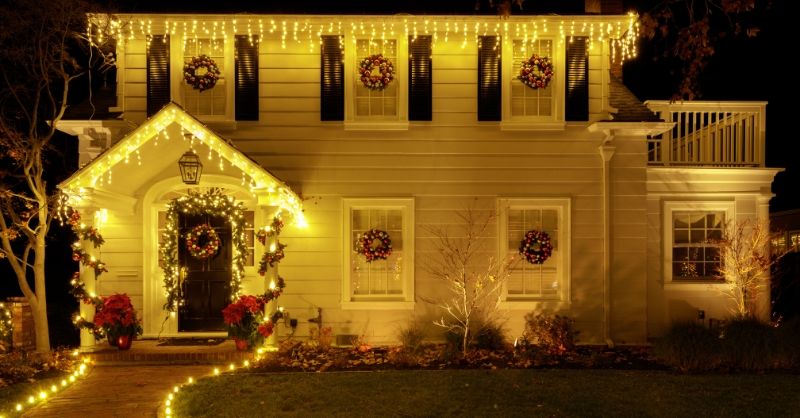How to Paint a Tall Entryway Safely
November 17th, 2025
6 min read

If you’ve ever stood at the bottom of your stairs and looked up at that tall entryway thinking, “How am I supposed to paint that?”, you’re not alone. Entryways are often the most visible part of a home, yet they’re also one of the trickiest spaces to paint. Between high ceilings, tight corners, awkward staircases, and light fixtures that seem to be placed just to get in your way, it’s easy to feel overwhelmed.
Many homeowners in Omaha decide to tackle other painting projects themselves, a bedroom, a hallway, or even a small bathroom. But when it comes to a tall, open entryway, the story changes quickly. The height alone can be intimidating, and the risk of a fall or damage to flooring, trim, or light fixtures makes this one project that requires serious caution.
At Brush & Roll Painting, we’ve painted hundreds of two-story entryways throughout Omaha since 1996. From homes in Elkhorn and Millard with grand staircases to newer builds in Bennington with tall foyers, we’ve seen it all. We know what it takes to make an entryway look professionally finished without sacrificing safety.
We use high-quality paints like Benjamin Moore’s Regal Select and Aura, and we take preparation seriously, from protecting floors to ensuring proper ladder setup and ventilation. Whether you’re considering doing this yourself or hiring a professional, our goal in this article is to help you understand exactly what’s involved so you can make an informed, safe decision.
By the end of this article, you’ll know what makes an entryway different from other painting projects, the key safety steps that should never be skipped, and when it might make sense to hire a professional. You’ll also get a clear idea of what to expect cost-wise, including why many Omaha homeowners find professional entryway painting to be well worth the investment.
Why Entryways Are More Challenging Than They Look
Painting a room with 8- or 9-foot ceilings feels manageable. But once you get into an entryway that’s 16, 18, or even 20 feet tall, everything changes.
Here’s what makes these spaces so challenging:
- Height and accessibility: Most entryways require tall ladders or scaffolding. Even something as simple as cutting in near the ceiling becomes a safety hazard if you’re not properly equipped.
- Staircases: Angled or curved stairs make ladder placement extremely tricky. Many homeowners underestimate how unsafe it can be to balance a ladder on uneven steps.
- Light fixtures: Chandeliers or hanging fixtures are beautiful, but they complicate the process. These need to be cleaned, covered, or temporarily removed before painting.
- Wall surface and lighting: Entryways usually receive a lot of natural light. That’s great for ambiance, but it also exposes every roller mark and brush line. Prep work and even paint coverage become more important than ever.
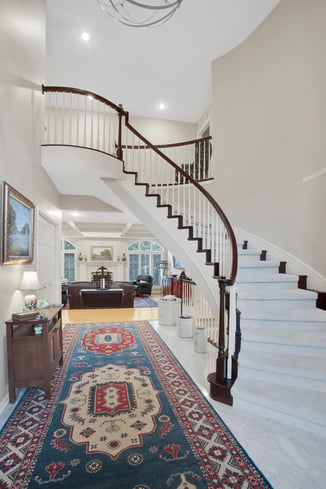
Step-by-Step Guide to Painting an Entryway Safely
Even if you plan to hire a professional, it’s helpful to understand what’s involved. Here’s how to paint an entryway safely, whether you’re doing a simple refresh or changing your home’s entire color scheme.
1. Start with Preparation and Protection
Before any paint goes up, proper prep is crucial.
- Move furniture: Remove any tables, chairs, or decorations that could get in the way or collect dust.
- Cover flooring: Use drop cloths or plastic sheeting to protect hardwood, tile, or carpet. Entryways are high-traffic areas, so one spill can do lasting damage.
- Tape trim and edges: Around doorways, windows, and baseboards, painter’s tape helps create clean lines.
- Turn off lighting fixtures: For safety, shut off power before removing or covering light fixtures.
Good prep doesn’t just protect your home; it also makes the paint job smoother and safer.
2. Choose the Right Tools for Height and Safety
For most Omaha entryways with 16- to 18-foot ceilings, a simple step ladder won’t cut it. Professionals often use adjustable ladders or scaffolding systems that allow for a stable platform.
If you’re painting yourself:
- Never balance a ladder on stairs. Instead, use an adjustable “stair ladder” or extension ladder designed for uneven surfaces.
- Always maintain three points of contact (two feet and one hand) while climbing.
- Don’t stretch or lean too far. Move the ladder instead, even if it takes more time.
Tip: Use an extension pole with your roller. This allows you to reach higher spots safely without climbing as often.
Safety gear also matters. Non-slip shoes, safety goggles, and a sturdy mask or respirator (especially when sanding or using oil-based primers) can protect you from injury or inhalation hazards.
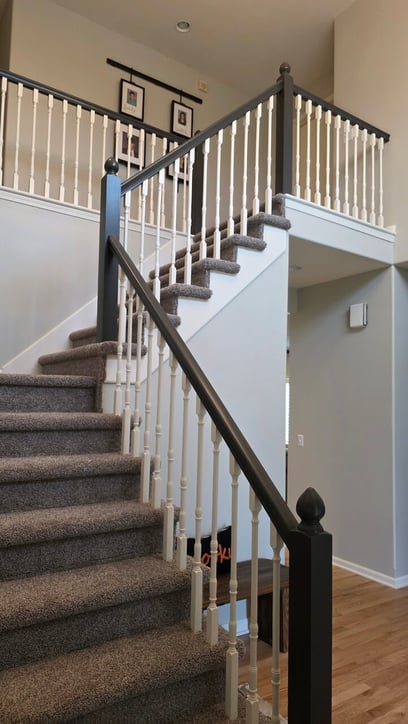
3. Handle Tall Walls and Ceilings the Right Way
The higher the wall, the harder it is to maintain consistent coverage. Start with the ceiling first if you’re painting both.
- Ceilings: Use a flat or matte finish to hide imperfections. If it’s popcorn texture, rolling gently with a thicker nap roller helps prevent it from crumbling.
- Walls: Use an eggshell or satin finish, which holds up well against scuffs and fingerprints in high-traffic areas.
When cutting in along high edges, some professionals use small scaffold planks to work safely side by side, reducing the risk of ladder slips.
4. Pick the Right Paint Color for an Entryway
Entryways set the tone for your entire home. Lighter colors make the space feel taller and more open, while darker tones can make it cozy but may also highlight uneven lighting.
In Omaha homes, popular entryway colors include:
- Benjamin Moore Revere Pewter (HC-172): A warm gray that pairs beautifully with white trim.
- Classic Gray (OC-23): Subtle, soft, and timeless.
- White Dove (OC-17): Bright without feeling harsh, perfect for adding light to shadowed staircases.
If you have wood trim, consider whether you want to paint it or keep it natural. Painting can modernize your space, while staining keeps a classic Nebraska charm.
5. Pay Attention to Temperature and Humidity
Since Omaha experiences humid summers and dry winters, timing matters. Extreme humidity can cause paint to dry unevenly, while very dry air can make it cure too quickly, leaving brush marks.
Fall and spring are usually ideal for painting interior spaces because temperatures are moderate and humidity levels are more balanced.
If your entryway connects to an exterior door, keep it closed while painting to prevent temperature swings from affecting the finish.
6. Don’t Skip the Cleanup and Inspection
Once the walls are dry, remove painter’s tape carefully, checking for any missed spots or uneven edges. Reinstall light fixtures, wipe down trim, and vacuum any dust left from prep work.
A professional will usually do a final walkthrough to ensure clean lines and full coverage. For DIYers, this step is just as important. Look at your work from different angles and under different lighting conditions, daylight, evening, and artificial light, to catch anything that needs touch-up.

How Much Does It Cost to Paint an Entryway?
Professional entryway painting in Omaha typically ranges from $2,000 to $3,000, depending on size, ceiling height, and complexity.
Factors that affect cost include:
- Ceiling height (taller requires more setup and time)
- Condition of existing paint
- Number of colors or coats
- Stairways or trim work
- Accessibility (tight landings or uneven flooring)
That price usually includes prep work, materials, labor, and cleanup. For homeowners, it’s often worth the investment for peace of mind, not just for appearance but also for safety.
Why Hiring a Professional Makes Sense for Entryways
Even the most confident DIY painter can admit that an entryway feels risky. One slip on a ladder or a poorly balanced setup could lead to serious injury or costly damage.
Professional painters not only have the right tools, but they also know how to work safely at heights, handle difficult lighting, and produce smooth, consistent finishes. They’re also insured — which means if something were to happen, you’re not left with the liability.
At Brush & Roll Painting, for example, our crew is trained to handle high spaces using the proper equipment, and we take great care to protect every part of your home before we even start painting. That level of detail helps ensure both safety and a long-lasting finish.
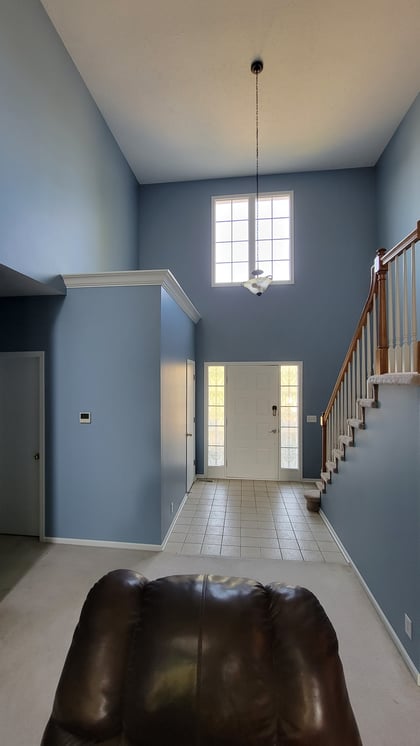
When DIY Painting Might Still Be Okay
If your entryway is smaller, has a lower ceiling (under 10 feet), and doesn’t include stairs or complex trim, you may be able to handle it yourself.
In that case:
- Choose paint that’s washable and durable (like Benjamin Moore Regal Select).
- Take your time with prep.
- Avoid rushing the project. Tall spaces often need two coats for an even look.
But if you’re facing a two-story space, multiple colors, or hard-to-reach areas, hiring a pro is almost always the safer and smarter option.
Entryway Painting Safety: What You’ve Learned
Painting an entryway safely is about more than just having a steady hand. It involves the right equipment, careful planning, and an understanding of how to work in tall, high-traffic spaces. You now know how to:
- Prepare and protect your space properly
- Choose tools and equipment for safety
- Pick paint colors and finishes that fit your home
- Understand when to DIY and when to hire help
Interior Painting in Omaha, NE
If your entryway has high ceilings or a staircase, painting it safely requires the right approach. You’ve learned what makes this area challenging, what tools professionals use, and why safety and prep are so essential.
At Brush & Roll Painting, we’ve helped Omaha homeowners transform their entryways for nearly 30 years, not just for beauty, but for safety and quality that lasts.
If you’re ready to refresh your entryway but don’t want to worry about ladders, heights, or safety gear, click the button below to get a quote.
If you’re still exploring options, try our interior painting pricing calculator to estimate what your project might cost before scheduling an exact quote.
Kaylea is the Brush & Roll Painting Content Manager. Kaylea is a Journalism and Media Communications summa cum laude graduate with a minor in Marketing from the University of Nebraska at Omaha. Kaylea manages the marketing for Brush & Roll Painting.












-Jul-23-2025-02-21-33-5468-PM.png?width=800&height=418&name=Blog%20Post%20Image%20Size%20(2)-Jul-23-2025-02-21-33-5468-PM.png)


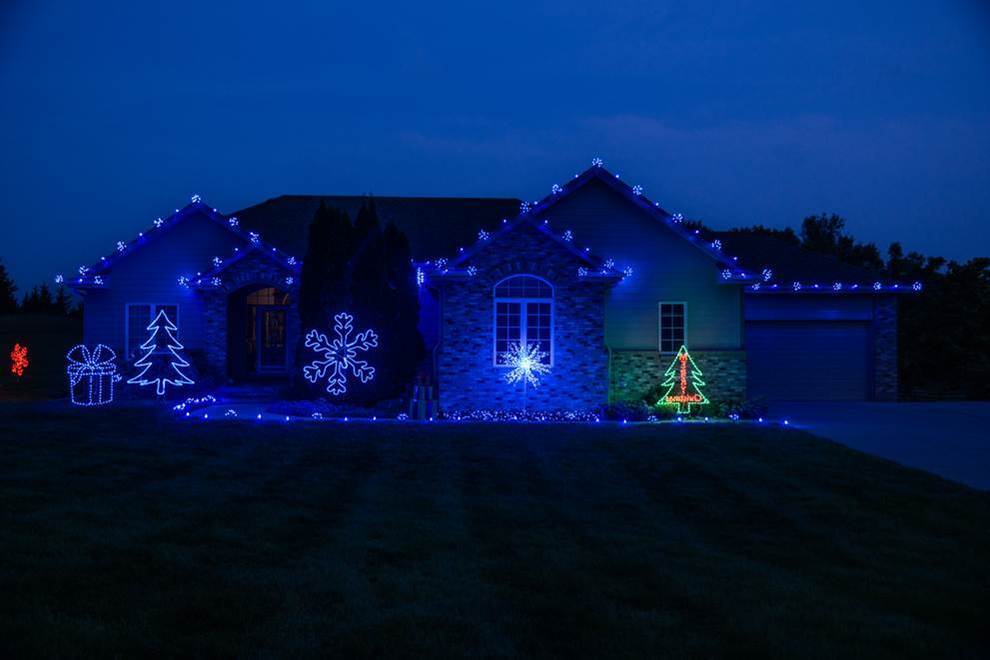
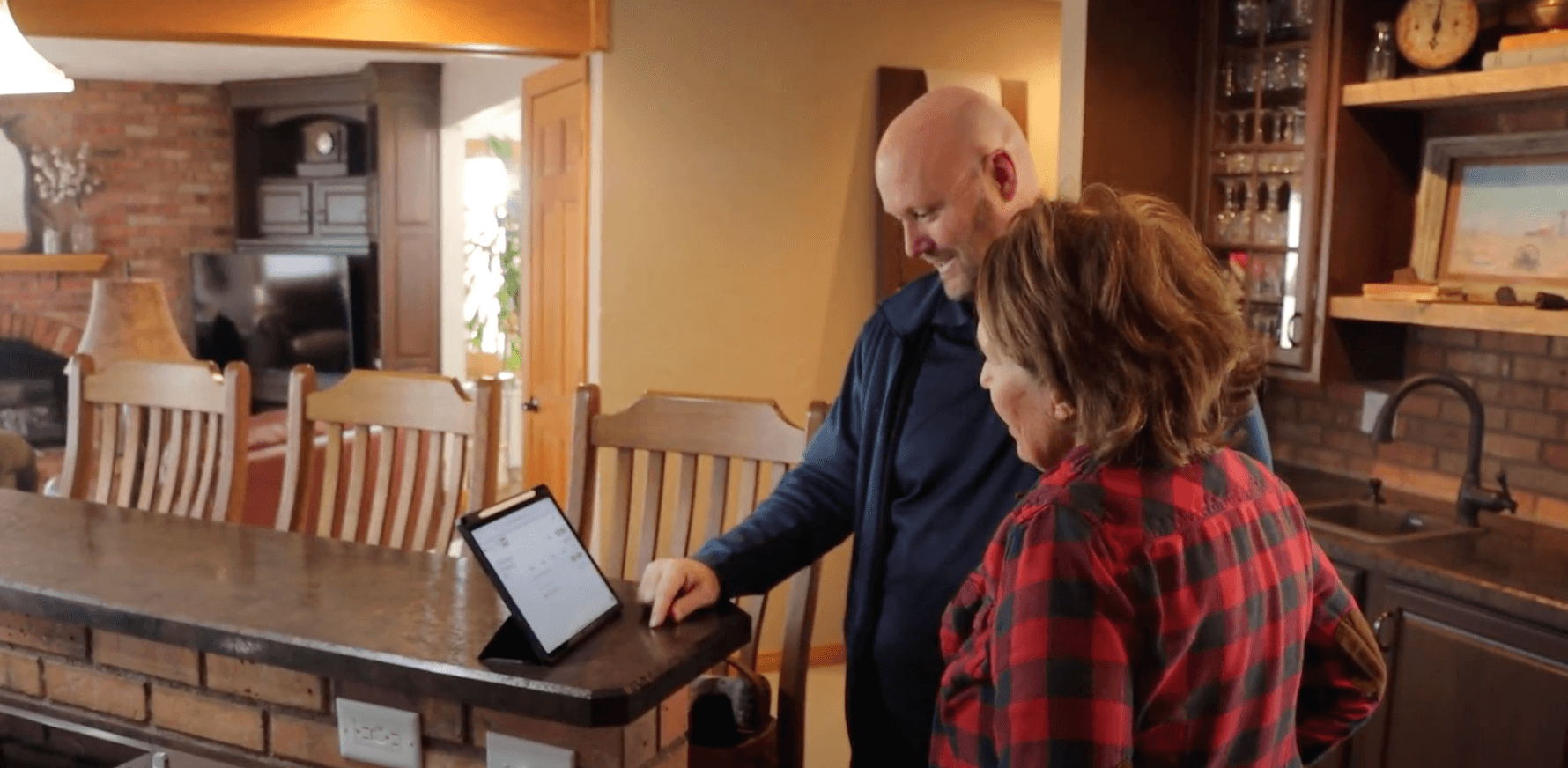
-Oct-22-2025-01-39-19-5208-PM.png?width=800&height=418&name=Blog%20Post%20Image%20Size%20(1)-Oct-22-2025-01-39-19-5208-PM.png)
